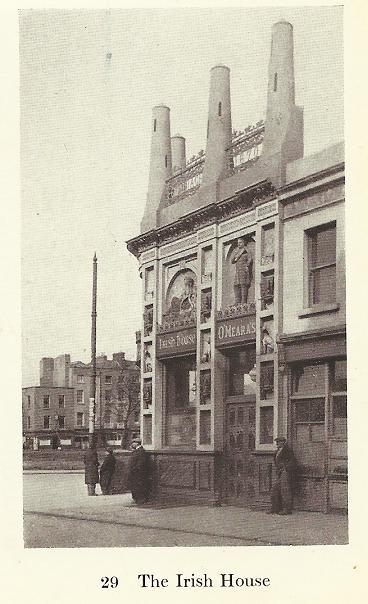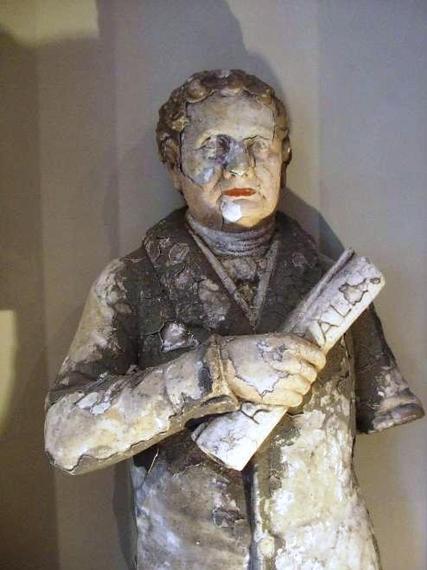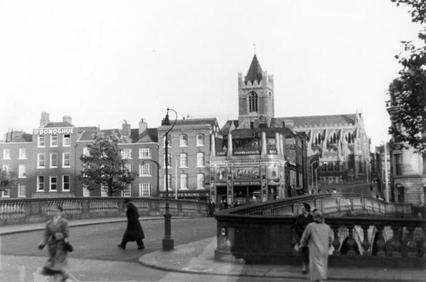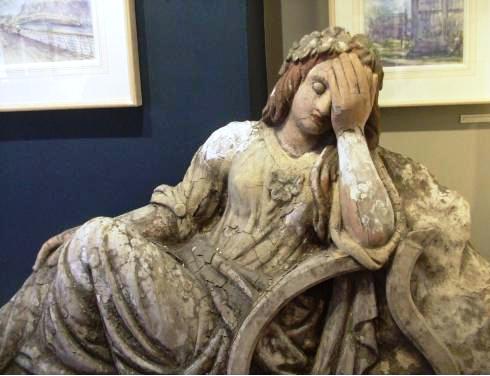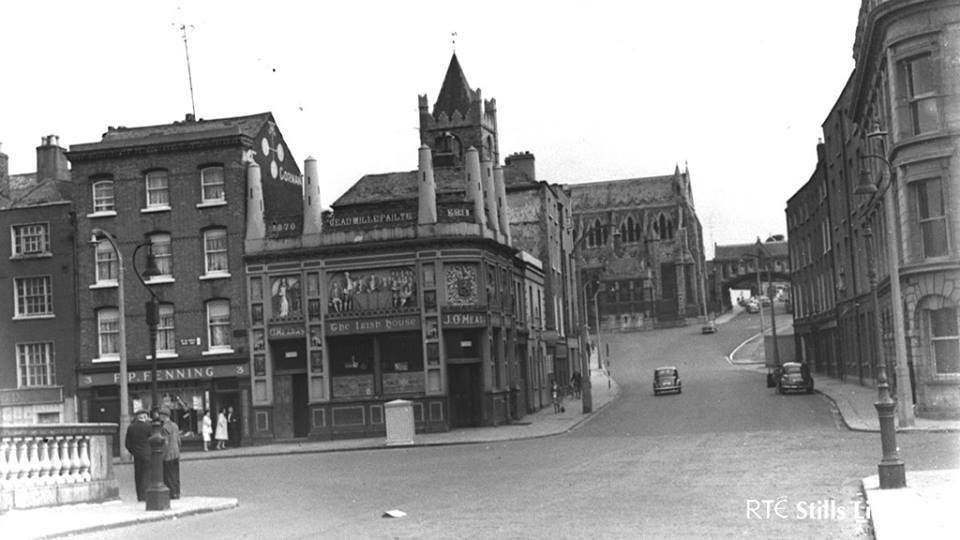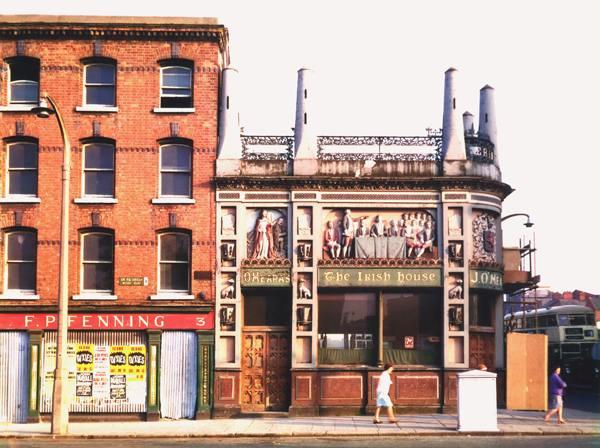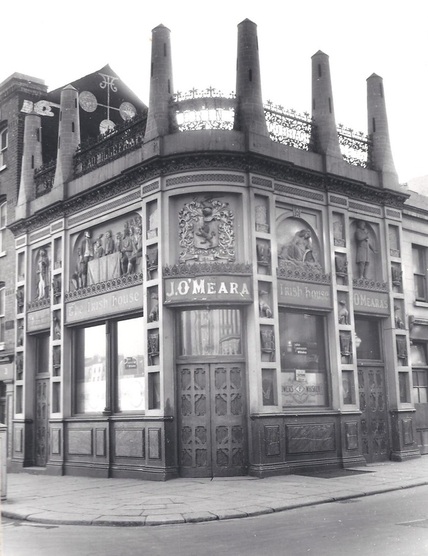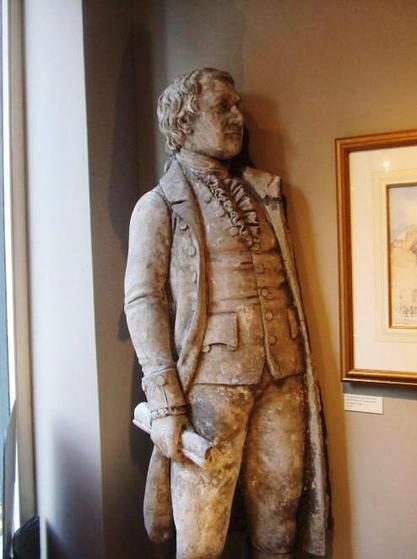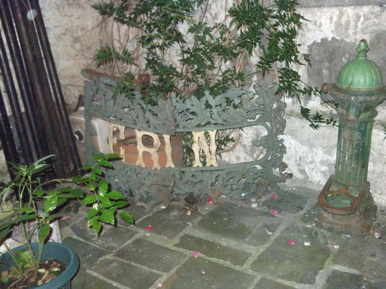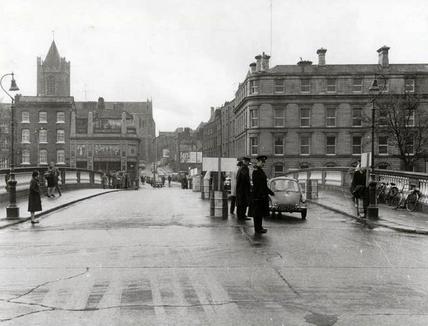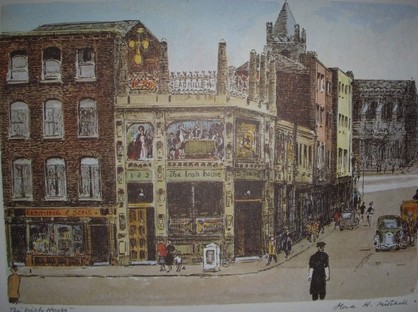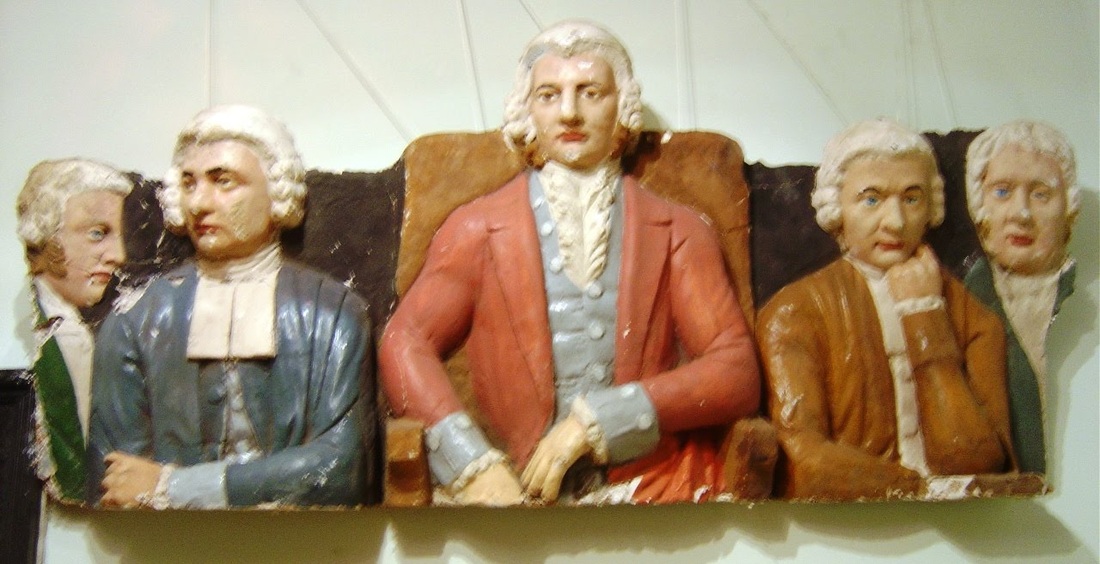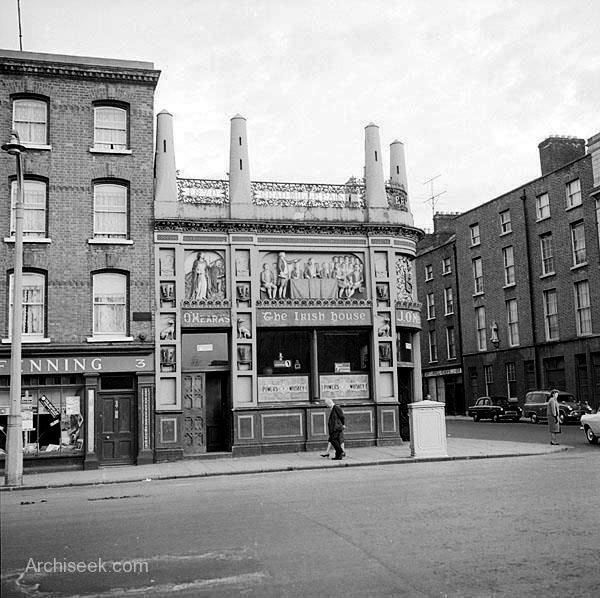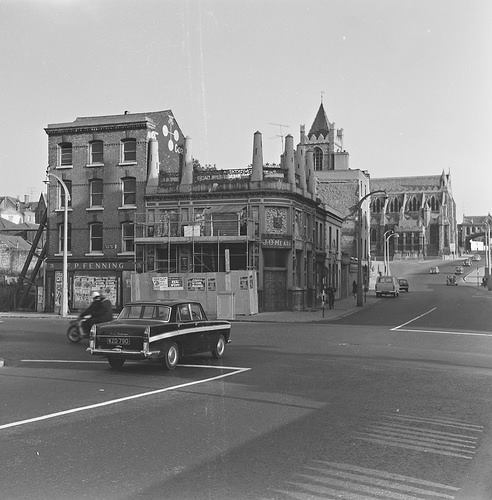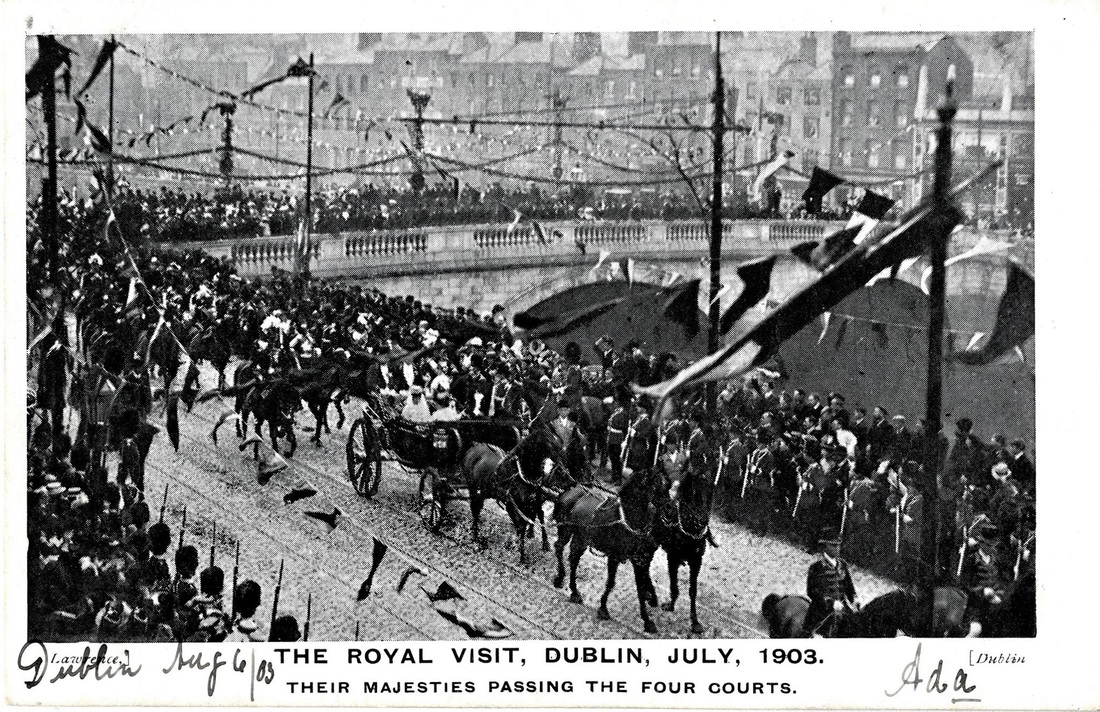THE IRISH HOUSE - A DUBLIN PUBLIC HOUSE .
|
Daniel O'Connell statue from the Irish House
|
The Irish House was a Victorian pub which stood on the corner of Winetavern Street and Wood Quay, it was a well known drinking establishment for many years. This public house was the last pub to stand on Winetaven Street. As the street name suggests the street was well know for the many wine taverns that once occupied the street. O'Meara's (formerly Timoneys) Irish House was best known for the remarkable Stucco work on the facade. Built in 1870 by P.P.Kelly the decorated facade included Celtic revival and nationalist subjects by Stuccodores Burnet and Comerford.
In the early nineteenth century it was fashionable to decorate the exteriors of buildings with a hard plaster or stucco. Stucco is a type of cement and render it was made up of limestone, plaster and sand. There are numerous examples of this work on the on many Dublin building exteriors. The ornate exterior of the Irish House included life size figures of Daniel O’Connell, and Henry Grattan addressing members of the Irish parliament. Figures of Erin weeping over a string less harp, and six Irish wolf hounds graced the façade. For over a century the building stood by the River Liffey until it was demolished to make way for the controversial Dublin Corporation offices Thanks to the foresight of Lord Moyne the vice-chairman of the Guinness Brewery, who financed a project to salvage the exterior of the Irish House. The ornate façade and statues were retrieved from the exterior of the Irish House in July 1968 and transported to a warehouse at the Guinness Hop store. In 2002/03 after negotiations between Diageo the new owners of Guinness the Dublin Civic Trust secured the elements of the Irish House facade and so became the custodians of this treasure of Dublin’s past. |
|
The building was used as a backdrop for Joe Strick’s film adaption of Ulysses in 1965. While Joyce’s Leopold Bloom had his snack at Davy Byrne's on Duke Street, Strick moved the scene to the Irish House, where Milo O’Shea played Bloom. Racist taunts aimed at Bloom from midday drinkers resulted in a scene outside the facade.
|
Figure of Erin from the Irish House
Dublin Civic Trust is an independent charitable organisation that works to recognize and protect the city’s architectural heritage.
The Dublin Civic Trust are based at 18 Upper Ormond Quay, Dublin 7, Ireland • Tel: 353 1 8749681 |
